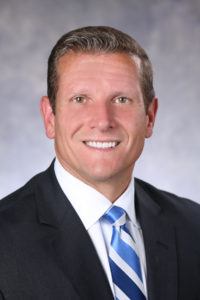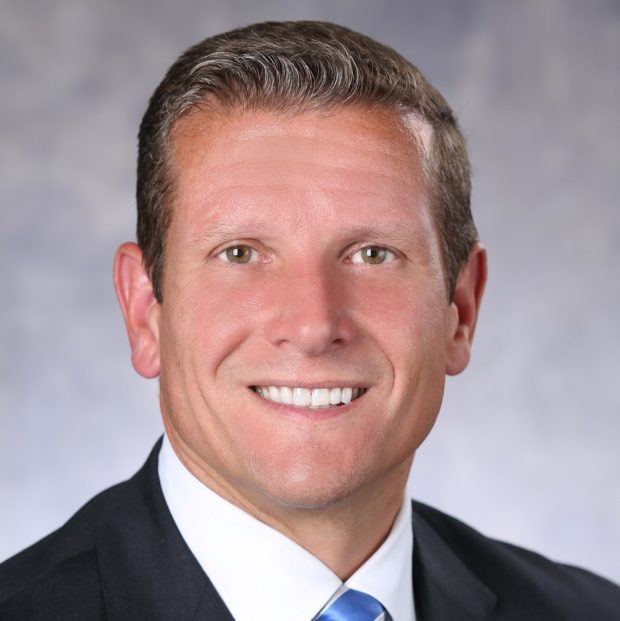The leader of American International Group’s commercial businesses said low-billion-dollar acquisitions could be part of the go-forward strategy during a conference yesterday, where he also revealed how AIG is benefiting from the dynamics of a soft market.
The poll result: 80 percent said share buybacks and dividends was the best use, while 13 percent selected bolt-on acquisitions and 8 percent said both.
“That’s very consistent with the strategy we have been implementing,” Schimek said, analyzing the poll results and referring to a $25 billion amount that AIG has promised to return to shareholders as part of its 2016-2017 strategic plan.
But like one-fifth of the respondents, Schimek said AIG would “continue to be opportunistic” in putting some money to work, noting that the soft property/casualty insurance market could present “some interesting bolt-on acquisition opportunities.”
“You should expect that we’ll be very thoughtfully evaluating whether there are opportunities to do something that will create even greater value,” he said.
Barclay’s Analyst Jay Gelb pressed Schimek for size details. “In AIG’s view, how big is a bolt-on?” Gelb asked.
“For us to buy a company that has a purchase price in the hundreds of millions of dollars is very natural and very easy for us to do,” Schimek replied, stressing that even as leaders vet potential deals, they will “have to stay focused” on key objectives of AIG’s strategic plan and avoid “being distracted by too many small bolt-on acquisitions.”
More specifically addressing the size question, Schimek said, “Low billions or hundreds of millions is probably a range that I would consider.”
Soft Market Winds

“We already have size and scale and depth and breadth of capability. So I don’t need to get bigger as my primary objective. I want to create more value.”
Rob Schimek
Focusing on the loss ratio goal, Schimek boiled down AIG’s moves to get there in three basic steps: the use of reinsurance; a narrower focus in terms of P/C commercial insurance customers, products and geographies; and “micro-segmentation.”
While the “narrower focus” refers to efforts to focus on customers who buy more than just one or two insurance products from AIG, as well as moves to exit slivers of business lines—like pollution legal liability and an excess layer of long-haul truck business—that produced outsized losses and steps to scale back operations in some regions of the world, Schimek’s reference to “micro-segmentation” went further. Explaining the term, he described a laser focus—getting down to a “very detailed level to make decisions about which clients you want to be in and in which places you want to serve those clients” and using “both internal and external data to do a better job with respect to risk selection.”
Gelb, citing the fact that the three steps have already produced a big improvement in AIG’s accident-year loss ratio during the first two quarters, said he is often asked about the front-loaded nature of the plan. (Editor’s Note: AIG reported an adjusted accident-year loss ratio of 62.4 in the second quarter of 2016, 3.8 points better than the full-year 2015 ratio of 66.2—the benchmark from which AIG has promised its six-point improvement.)
“Do you think we still can see [more] improvement over the course of this year and next year?” Gelb asked, offering the question he gets from investors back to Schimek.
While Schimek wouldn’t be coaxed to say that AIG Commercial could deliver any more than the six points of improvement, “the ability to get there faster is helped by the fact that while we are practicing very careful restraint in the market, there are a lot of other competitors who have not been,” he noted.
He went on to suggest that analysts who were initially worried about the fact that AIG was seeking to improve its underwriting results during a soft market—at a time when competition would limit prospects for repricing—did not fully grasp the ability of the global insurer to successfully discard unprofitable, unwanted business into the open arms of competitors.
“I think the soft market conditions have actually, in some ways, been wind in our back and not wind in our face,” Schimek said.
“When we want to exit a single product in a multiline product relationship, we can constructively work through with the broker and with the client [to find ways] to make that change. And we found that competitors have been very happy to take that piece of business from AIG,” even though it’s a piece that AIG knows is not profitable on its own.
“If you want to change your mix of business, when market conditions are soft it’s a good time” to do it, Schimek asserted.
“Obviously, soft rates impact all of our lines of business. In that area, there is wind in our face. But generally speaking, there has probably been more wind in our back where we have been able to improve the mix of business,” he said.
“If I [am] trying to shed a particular product, I can do that without horribly disrupting my client relationship or my broker relationship, and that helps me to optimize my mix of business.”
Sounding skeptical, Gelb asked how AIG can retain a customer while exiting part of the business, and also asked Schimek to explain why AIG’s top line has shrunk more than peers this year.
Addressing the first question, Schimek referred to “other differentiating characteristics” that AIG brings to the table to serve clients. As to the second, he acknowledged that premiums declined by roughly 20 percent in the second quarter, explaining that six points of the decline were attributable to the increased use of reinsurance.
That “fundamentally means we are still writing the business. We are just not retaining it net on AIG’s books,” he said, noting that another two points of decline came from line-of-business exits and chalking up another point or so to global rate declines.
The other 10 points of reduced premium volume came from the micro-segmentation risk selection activities, he said, going on to predict a $3 billion drop from all the activities taken together once the full year is in the books—roughly a 15 percent drop from a $20 billion starting point.
Bolt-Ons and Divestures to Continue
Still, Schimek sees pockets of opportunity to grow in 2017 and beyond in areas like transactional insurance for mergers and acquisitions, cyber insurance, middle-market property, and AIG’s multinational portfolio.
“But the market conditions will dictate for us whether we see additional opportunities to grow or whether we see additional opportunities to reshape the portfolio with our primary focus being on value creation,” he said.
The focus on “value creation” came up again when Gelb directly asked Schimek to outline AIG’s appetite for acquisitions. The CEO went on to discuss both the buy and sell side of the deal equation.
“We are very active in looking at any way to achieve growth, whether it’s organic or inorganic growth…We are also looking at divestitures if there are opportunities for us to optimize our portfolio,” Schimek said, referring to a recent small disposition—the sale of the commercial business of NSM, a managing general agent that AIG had acquired just over a year ago.
“We already have size and scale and depth and breadth of capability. So I don’t need to get bigger as my primary objective. I want to create more value.
“I want to be able to do things for our clients that no other insurance company in the world can do. And so if I could find opportunities to add a valuable specialty capability that we currently don’t have or that would be very difficult for us to build out, that’s attractive to us.
“But in general, we are not trying to simply collect companies or simply trying to get to be bigger,” he said, stressing the focus on optimizing overall value.





















 Market Softening Accelerates During 1/1/2026 Re Renewals
Market Softening Accelerates During 1/1/2026 Re Renewals  Berkshire Hathaway Enters Post-Buffett Era as Share Prices Fall
Berkshire Hathaway Enters Post-Buffett Era as Share Prices Fall  Rebuilding Negotiation Talent: Why This Skill Is Missing and How to Fix It
Rebuilding Negotiation Talent: Why This Skill Is Missing and How to Fix It  Breaking: Andersen to Replace Zaffino as CEO of AIG on June 1
Breaking: Andersen to Replace Zaffino as CEO of AIG on June 1 











